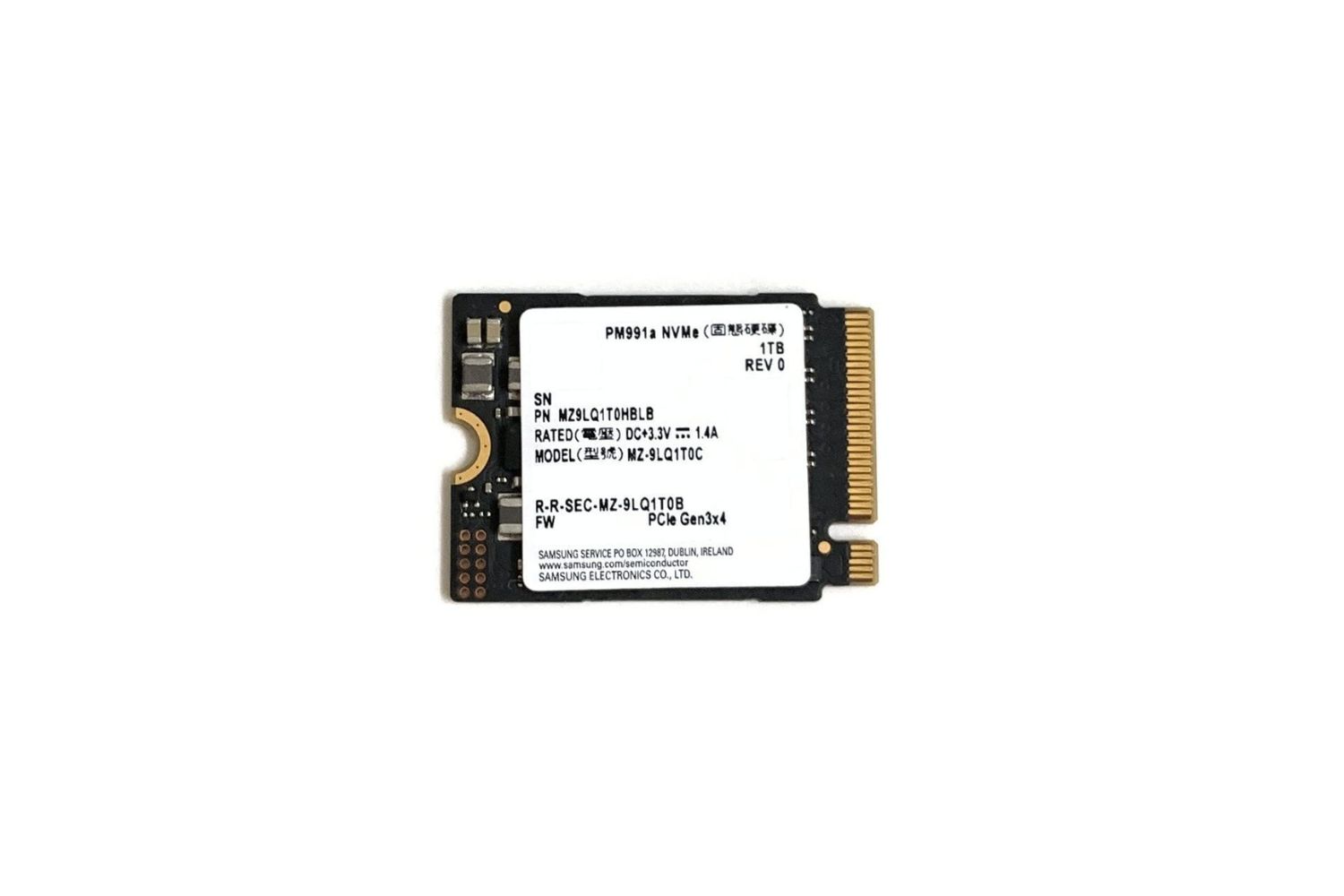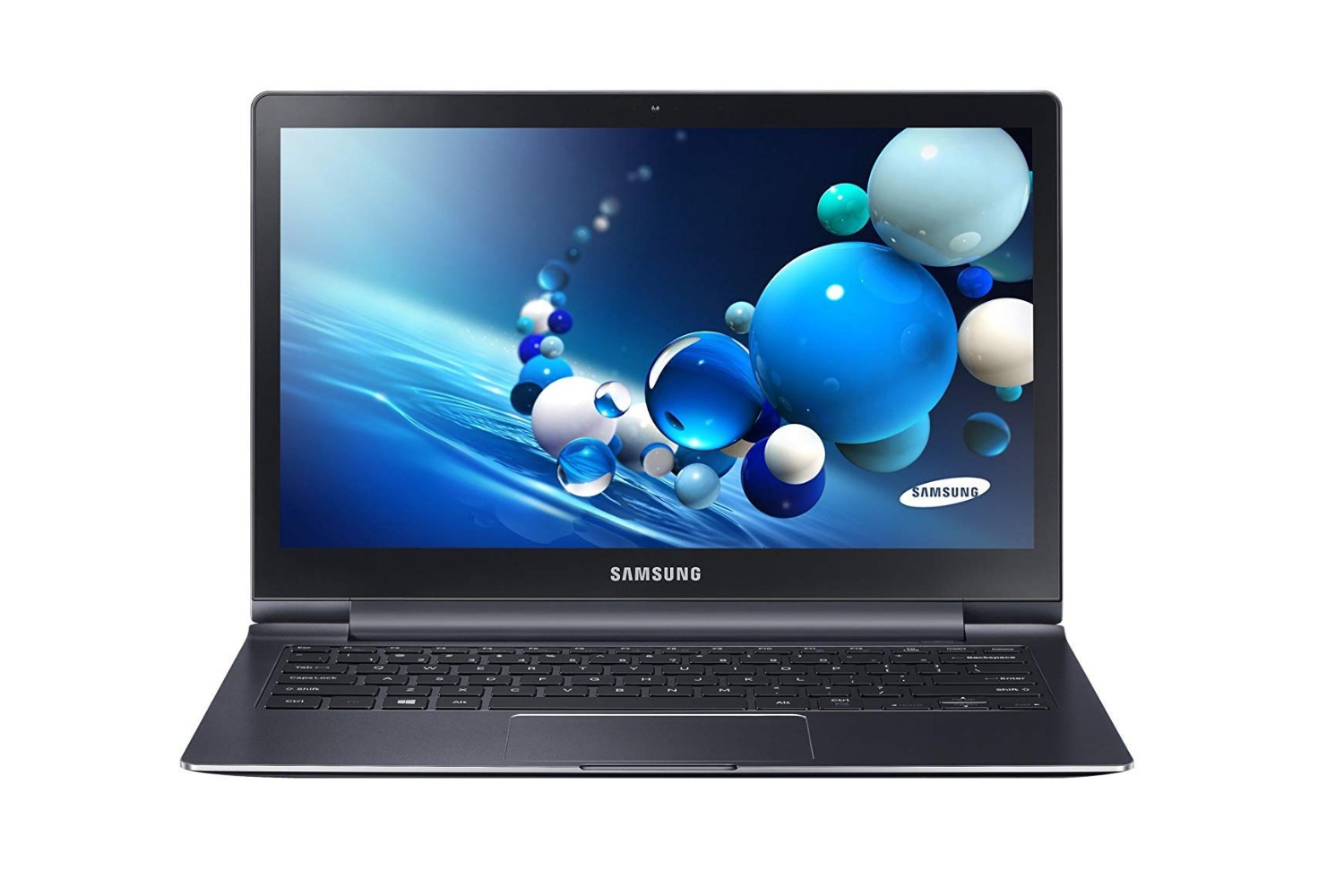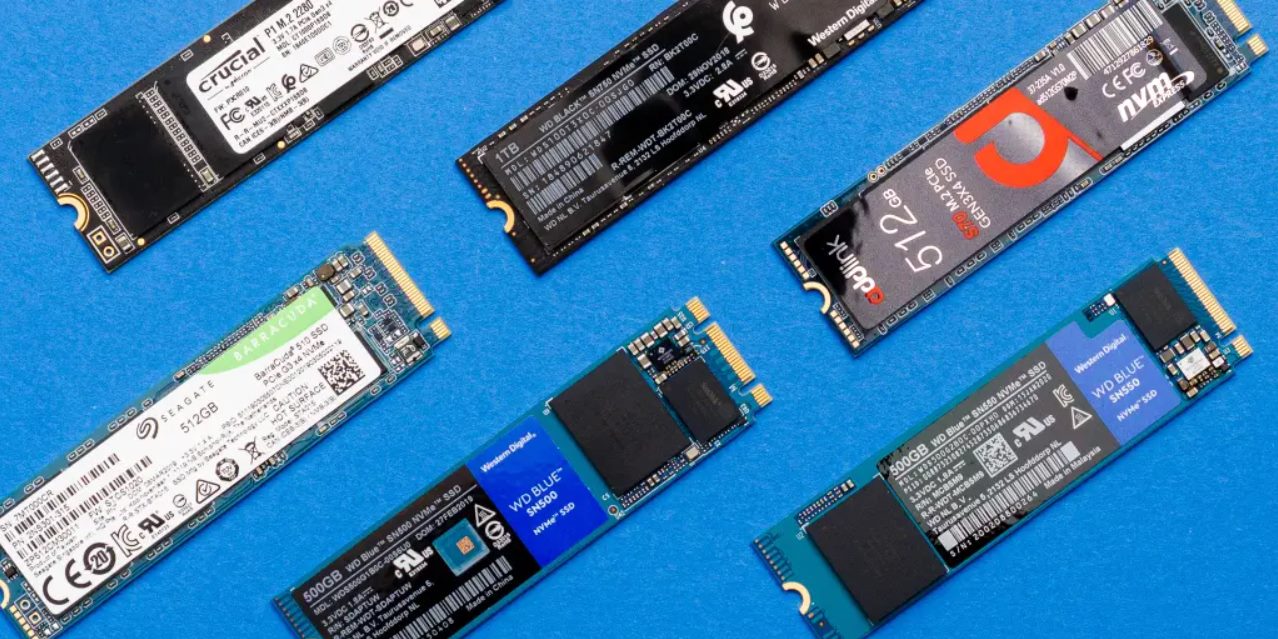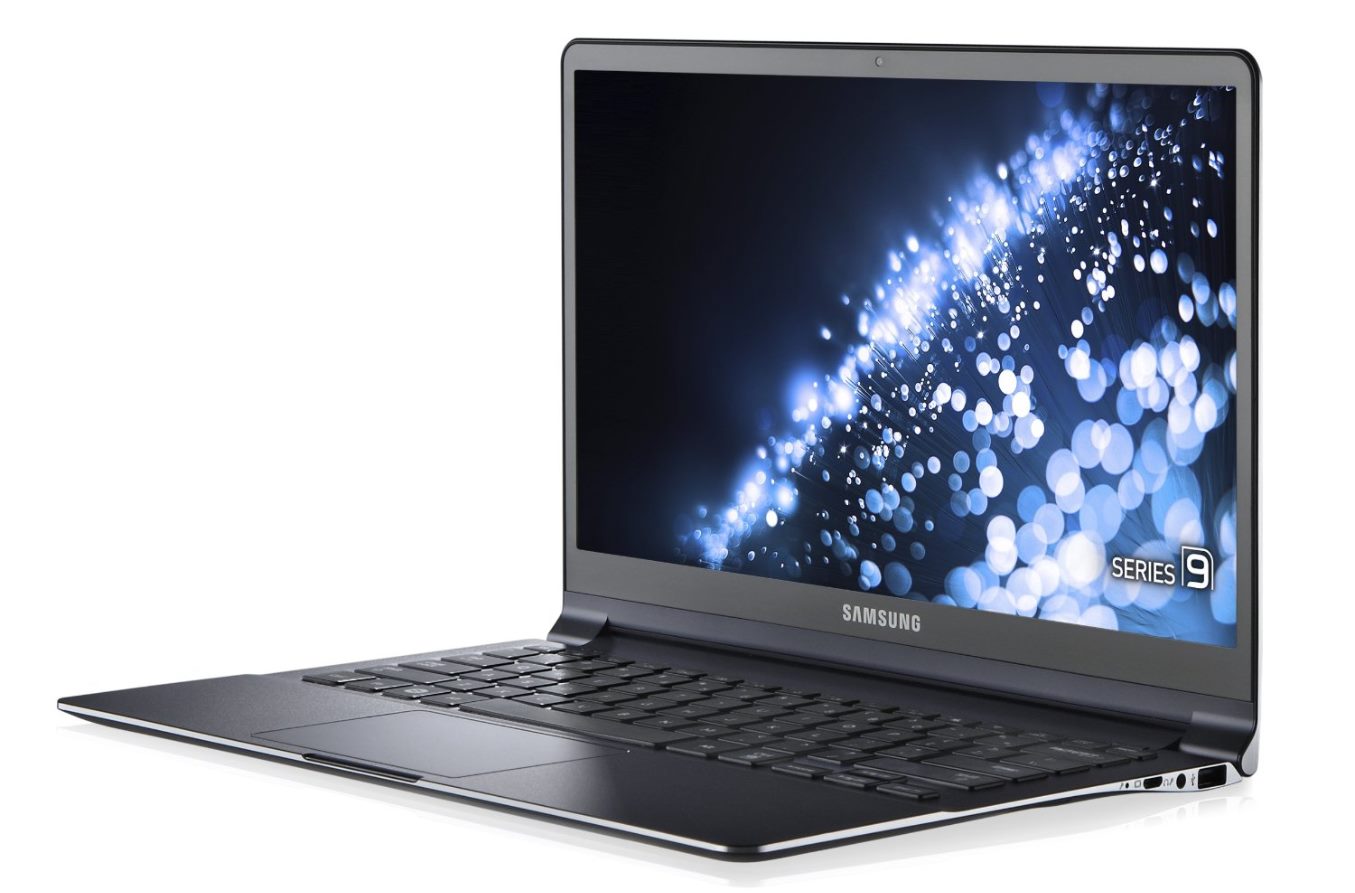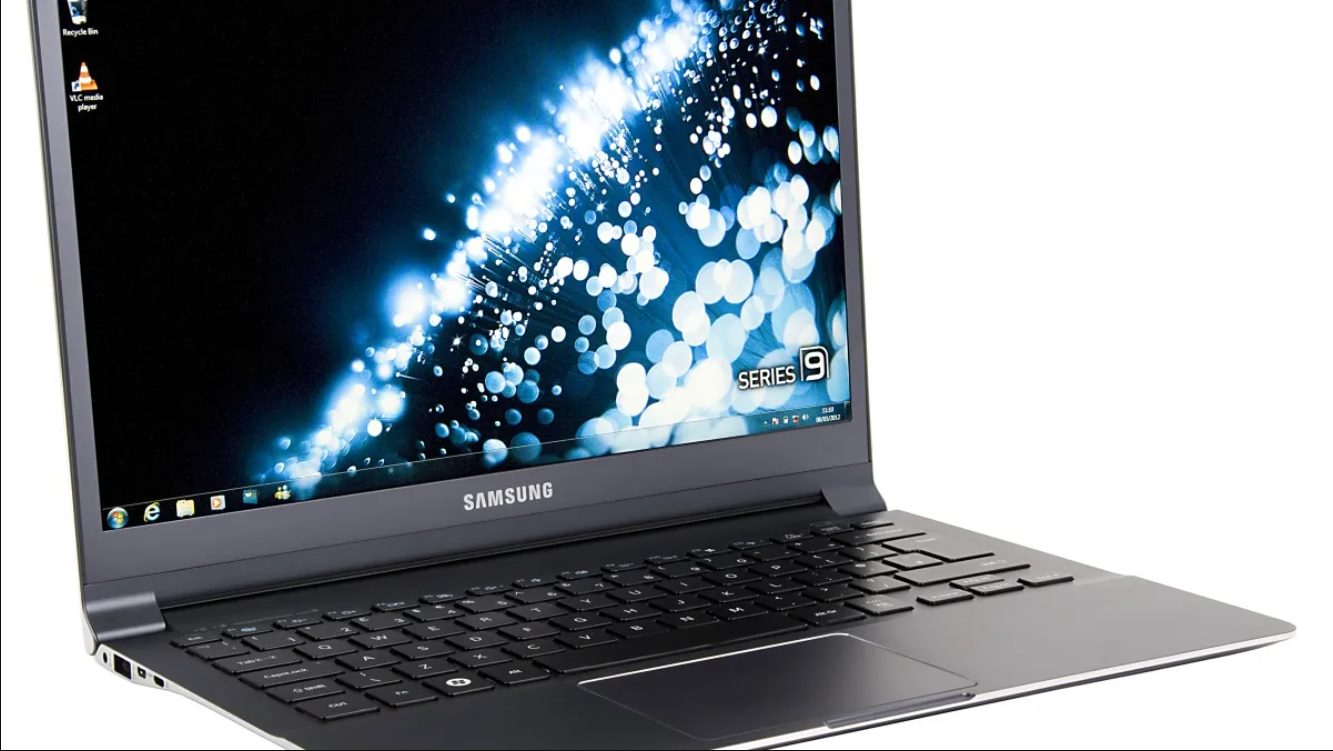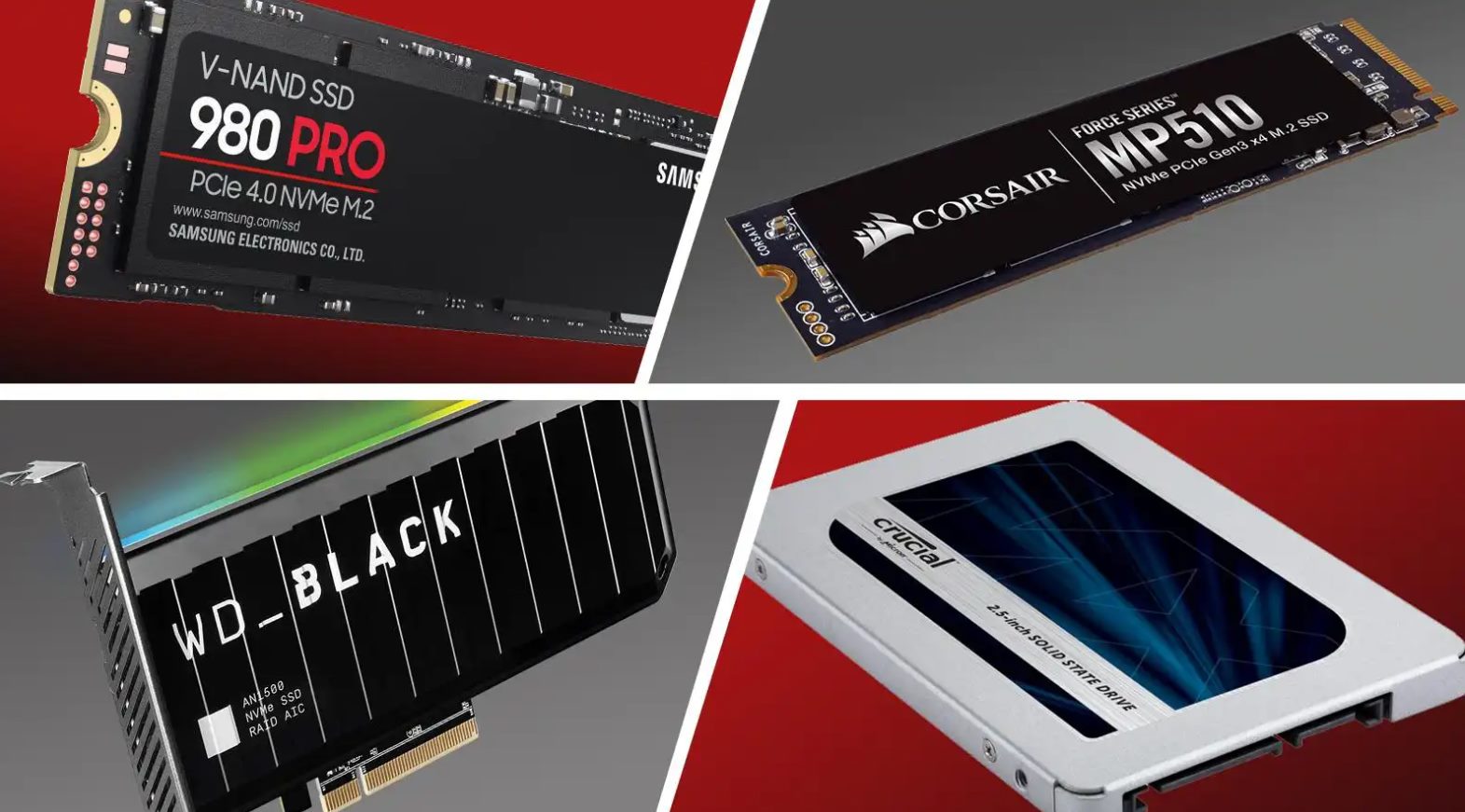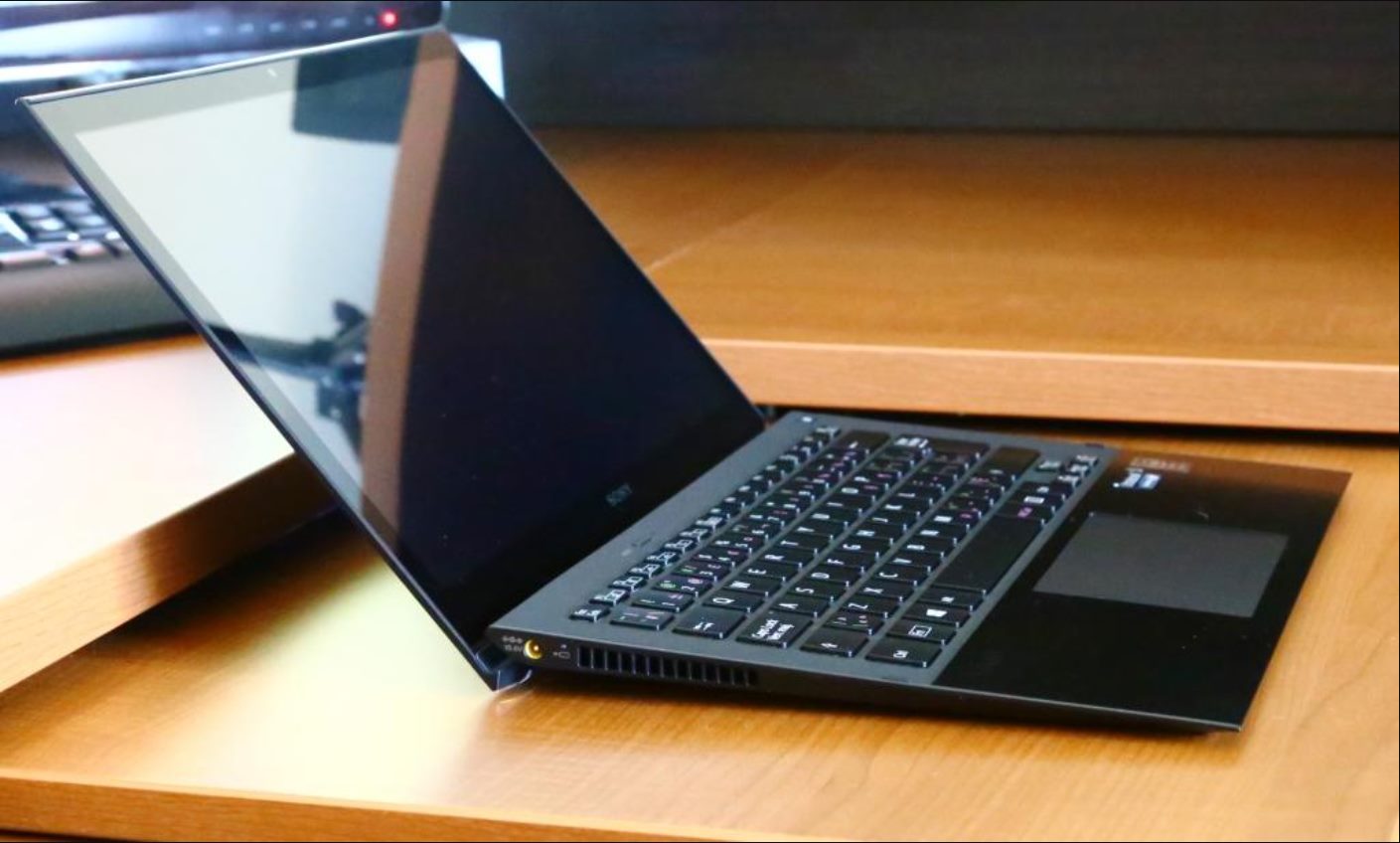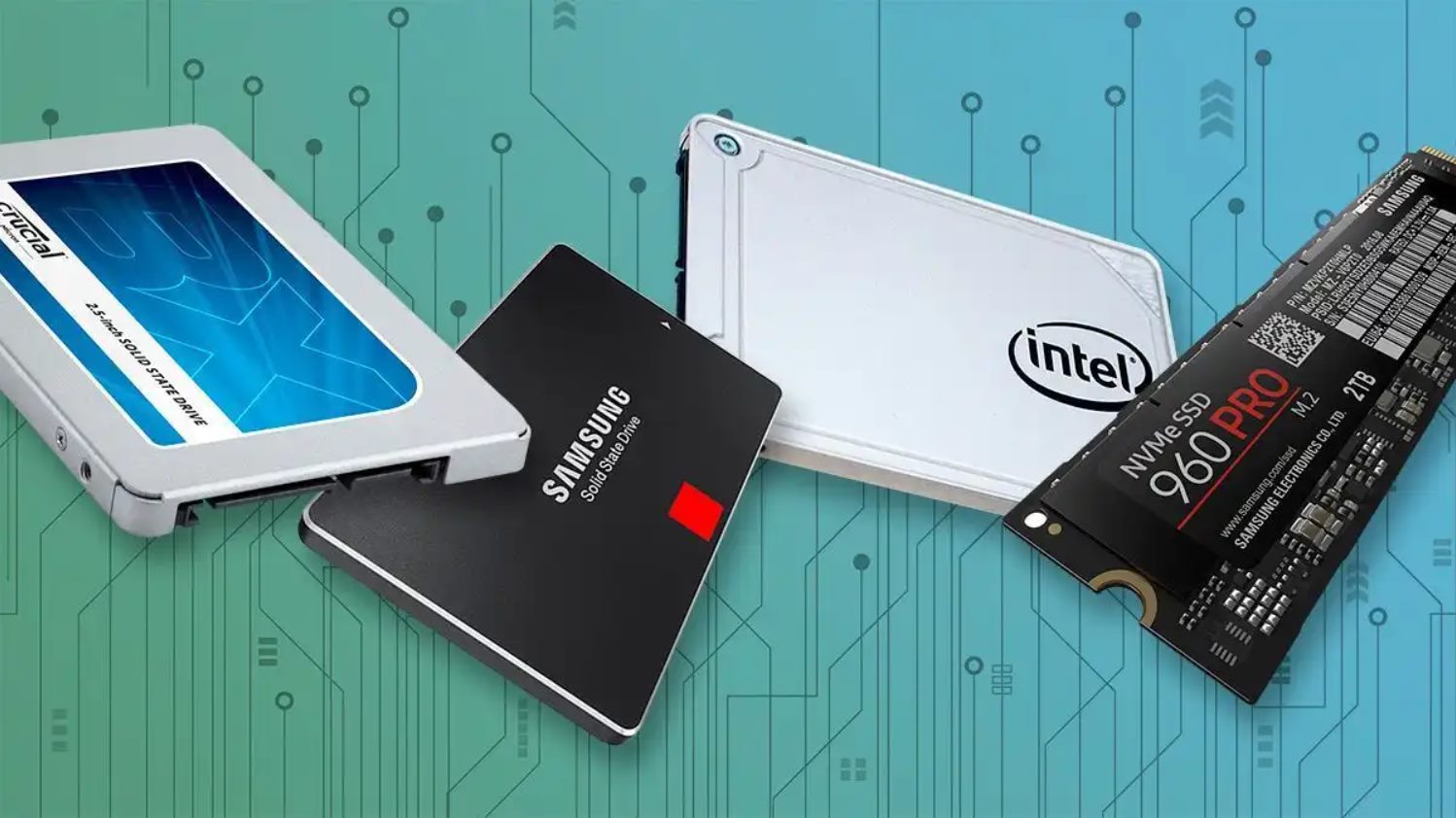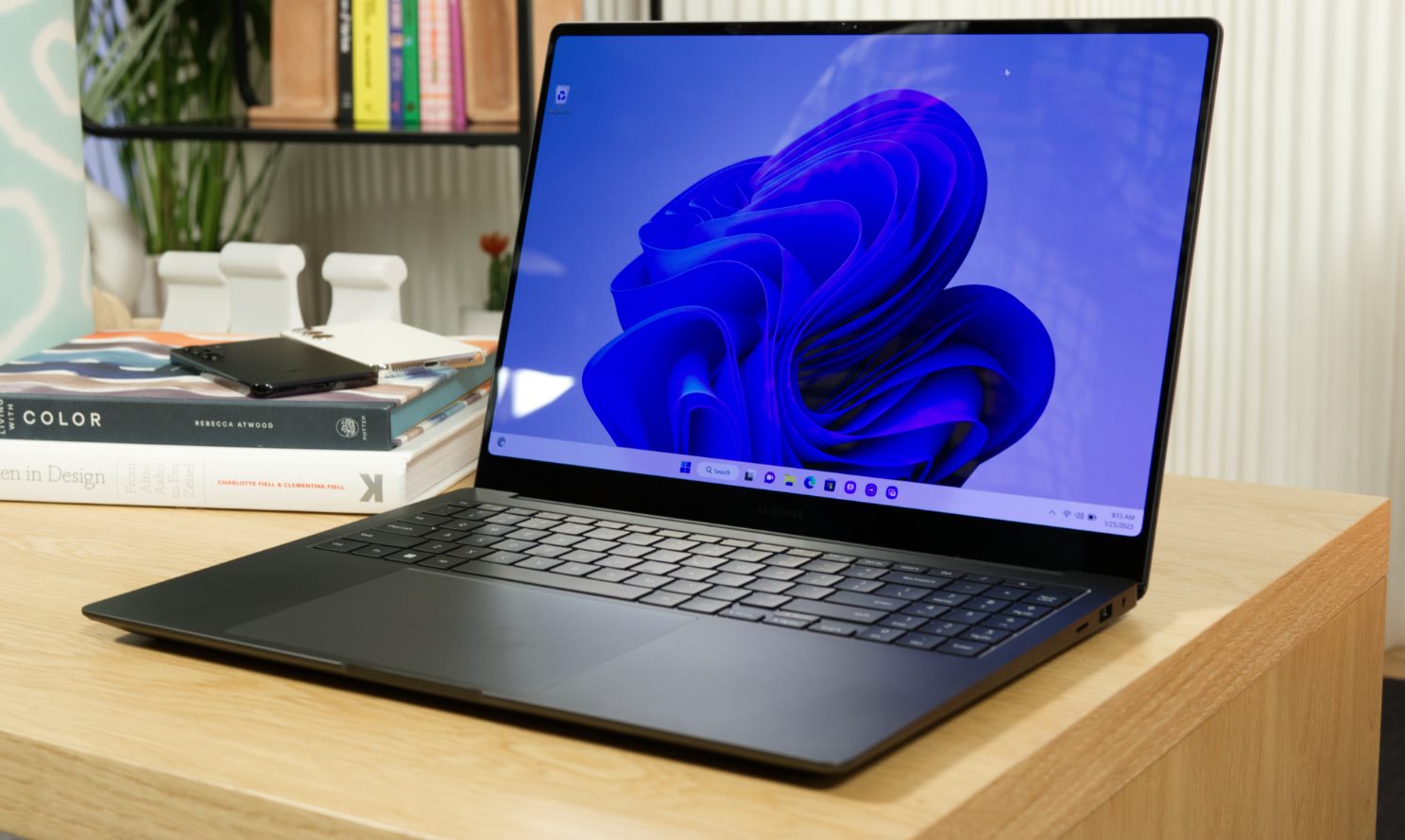Introduction
As technology continues to advance, the demand for faster and more efficient storage solutions has been on the rise. In the realm of ultrabooks, solid-state drives (SSDs) have become the go-to choice due to their lightning-fast performance and compact form factor. If you’re looking to upgrade or replace the SSD in your ultrabook, Samsung offers a wide range of options suitable for various needs and budgets.
Understanding the importance of choosing the right SSD for your ultrabook is vital. Not only does it affect the overall performance of your device, but it also determines how smoothly your operating system and applications run. In this article, we will explore the factors to consider when choosing a Samsung SSD for your ultrabook, as well as review a few of the top models from Samsung’s lineup.
When it comes to selecting an SSD, there are several factors to keep in mind. The most crucial consideration is the type of interface your ultrabook supports. SATA III and NVMe are the two prevalent interface types in the market. SATA III is the older, more common interface, while NVMe is the newer, more advanced option that offers significantly faster speeds. Understanding the interface type that your ultrabook can accommodate will help you narrow down your options and ensure compatibility.
Samsung has established itself as a leader in the storage industry, consistently delivering high-quality SSDs that offer exceptional performance. Their ultrabook-compatible SSDs are designed to meet the demanding needs of modern users, providing blazing-fast data transfer speeds and reliable storage. In the following sections, we will explore some of the top Samsung SSD options for ultrabooks.
Whether you’re a power user who needs maximum performance or a casual user looking for a reliable storage solution, Samsung has an SSD that can meet your needs. From the ultra-fast Samsung 970 EVO Plus to the high-performance Samsung 980 PRO, there is a wide range of options to choose from. Additionally, Samsung offers the portable and secure Samsung T7 Touch SSD, perfect for users on the go who value data privacy and convenience.
Now that we’ve established the importance of choosing the right SSD for your ultrabook and introduced some of Samsung’s top offerings, let’s dive into the specific models and their features. By the end of this article, you’ll have a clear understanding of which Samsung SSD is best suited for your ultrabook and how it can enhance your overall computing experience.
Understanding SSDs
To fully understand the benefits of Samsung SSDs for ultrabooks, it’s crucial to have a basic understanding of how SSDs work. Unlike traditional hard disk drives (HDDs) that use spinning disks and mechanical read/write heads, SSDs rely on flash memory chips to store data. This fundamental difference gives SSDs several advantages over HDDs, making them an ideal choice for ultrabooks.
One of the main advantages of SSDs is their incredible speed. Unlike HDDs, which have to physically move the read/write heads to access data stored on spinning disks, SSDs can access data almost instantly. This results in significantly faster boot times, file transfers, and application loading times, improving overall system performance.
Another benefit of SSDs is their reliability and durability. Since there are no moving parts, SSDs are more resistant to physical shock and damage, making them suitable for portable ultrabooks. Additionally, SSDs are not susceptible to mechanical failures that often plague HDDs, such as disk fragmentation or read/write head crashes.
SSDs also consume less power compared to HDDs, which is particularly important for ultrabooks that prioritize battery life. Since there are no moving parts to power, SSDs require less energy to operate, resulting in longer battery life and improved efficiency.
It’s worth noting that not all SSDs are created equal. The performance and reliability of an SSD can vary depending on factors such as the type of flash memory used and the controller technology employed. This is where Samsung excels, as they are a leading manufacturer of both flash memory and controllers. Their in-house development and integration of these components allow them to optimize performance and compatibility, ensuring their SSDs deliver exceptional results.
Now that you understand the advantages of SSDs over HDDs and the expertise behind Samsung’s SSD offerings, you can make an informed decision when choosing the right SSD for your ultrabook. In the following sections, we will explore the SATA III and NVMe interface types and discuss how they can impact your SSD selection.
Factors to Consider
When selecting a Samsung SSD for your ultrabook, there are several important factors to consider. By taking these factors into account, you can ensure that you choose an SSD that will meet your specific needs and provide optimal performance.
1. Storage Capacity: The storage capacity of the SSD is one of the primary factors to consider. Ultrabooks typically come with limited storage space, so it’s essential to choose an SSD that offers enough capacity to store your files, applications, and operating system. Samsung SSDs are available in a range of capacities, from smaller options like 250GB and 500GB to larger capacities like 1TB and 2TB.
2. Interface Type: As mentioned earlier, the interface type of the SSD is crucial for compatibility and performance. SATA III is the common interface found in most ultrabooks and offers good performance for everyday tasks. However, if your ultrabook supports NVMe, it’s worth considering an NVMe SSD for even faster data transfer speeds.
3. Data Transfer Speed: Different SSDs offer different data transfer speeds. This speed, measured in megabytes per second (MB/s), determines how quickly data can be read from or written to the SSD. Faster data transfer speeds result in faster boot times, quicker application loading, and shorter file transfer times. Samsung SSDs, especially those in their EVO and PRO series, are known for their high data transfer speeds, ensuring swift and seamless performance.
4. Endurance: SSD endurance refers to the amount of data that can be written to the drive over its lifetime. This is an important consideration, especially if you plan on performing frequent read/write operations or using the SSD for intensive tasks like video editing or gaming. Samsung SSDs, such as their PRO series, are designed with high endurance ratings, ensuring longevity and durability.
5. Price: Budget is an important factor to consider when purchasing an SSD. While Samsung SSDs tend to be slightly more expensive than their competitors, they offer exceptional quality, performance, and reliability. It’s worth investing in a high-quality SSD that will provide a smooth and reliable computing experience for years to come.
By considering these factors and understanding your specific needs, you can make an informed decision when selecting a Samsung SSD for your ultrabook. The next section will explore the differences between the SATA III and NVMe interface types, helping you determine which one is the right choice for your ultrabook.
SATA III vs NVMe
When choosing an SSD for your ultrabook, one of the key decisions you’ll need to make is whether to go with SATA III or NVMe. Both interface types have their advantages and understanding the differences between them will help you make an informed choice.
SATA III (Serial ATA Revision 3.0) is the most common interface type found in ultrabooks and traditional desktop computers. It offers good performance for everyday tasks and is compatible with a wide range of systems. SATA III SSDs connect to the motherboard using a SATA cable, similar to how traditional hard disk drives (HDDs) are connected. While SATA III SSDs provide significant improvements over HDDs in terms of speed and reliability, they are still limited by the bandwidth of the SATA III interface, typically achieving read and write speeds up to 550MB/s.
On the other hand, NVMe (Non-Volatile Memory Express) is a newer interface specifically designed for solid-state drives. NVMe SSDs connect directly to the motherboard via the PCIe (Peripheral Component Interconnect Express) interface, bypassing the limitations of SATA III. This allows for significantly faster data transfer speeds, resulting in improved overall system performance. NVMe SSDs can achieve read and write speeds of over 3000MB/s, enabling faster boot times, quicker application loading, and shorter file transfer times.
It’s important to note that in order to take full advantage of NVMe SSDs, your ultrabook must have an available NVMe slot or use an M.2 connector that supports NVMe. While not all ultrabooks support NVMe, most modern and high-end models do. Therefore, it’s crucial to check your ultrabook’s specifications before deciding on an NVMe SSD.
So, when should you choose SATA III and when should you opt for NVMe? If you primarily use your ultrabook for typical day-to-day tasks such as web browsing, document editing, and multimedia consumption, a SATA III SSD should suffice and provide a noticeable improvement over an HDD. However, if you require faster performance for demanding tasks like video editing, 3D rendering, or gaming, an NVMe SSD will deliver the exceptional speed and responsiveness you need.
Samsung offers both SATA III and NVMe SSDs, allowing you to choose the interface type that best fits your ultrabook and specific usage requirements. The following sections will explore some of the top Samsung SSD options in each category, highlighting their features and benefits.
Samsung SSDs for Ultrabooks
Samsung is a renowned leader in the storage industry, and they offer a wide range of SSDs specifically designed for ultrabooks. Whether you’re looking for blazing-fast performance, reliable storage, or portable convenience, Samsung has an SSD to suit your needs. Let’s explore some of the top Samsung SSD options for ultrabooks.
1. Samsung 970 EVO Plus: The Samsung 970 EVO Plus SSD is a high-performance NVMe SSD that delivers exceptional speeds and reliability. With read and write speeds of up to 3,500MB/s and 3,300MB/s respectively, it offers lightning-fast performance for demanding tasks. It is available in capacities ranging from 250GB to 2TB, ensuring ample storage for all your files and applications.
2. Samsung 980 PRO: The Samsung 980 PRO is another top-of-the-line NVMe SSD designed for ultrabooks. With read and write speeds of up to 7,000MB/s and 5,100MB/s respectively, it offers unparalleled performance and responsiveness. The 980 PRO is available in capacities of 250GB, 500GB, and 1TB, making it a perfect choice for users who demand the highest levels of speed and performance.
3. Samsung 870 EVO: The Samsung 870 EVO is a SATA III SSD that provides a balance of performance and affordability. With read and write speeds of up to 560MB/s and 530MB/s respectively, it offers reliable and consistent performance for everyday use. The 870 EVO is available in capacities ranging from 250GB to 4TB, providing ample storage for all your files and applications.
4. Samsung T7 Touch Portable SSD: If portability and data security are your priorities, the Samsung T7 Touch Portable SSD is an excellent choice. This compact and sleek SSD features a built-in fingerprint scanner for secure access to your data. With read and write speeds of up to 1,050MB/s, it offers fast and reliable storage on the go. The T7 Touch is available in capacities of 500GB, 1TB, and 2TB, giving you plenty of options to meet your storage needs.
Each of these Samsung SSDs offers its own unique set of features and benefits, allowing you to choose the one that aligns with your specific requirements and budget. Whether you need lightning-fast speed, high capacity, or portable convenience, Samsung has an SSD to enhance your ultrabook experience.
In the next sections, we will dive deeper into the features and performance of these Samsung SSDs, providing you with a comprehensive overview to help you make an informed decision.
Samsung 970 EVO Plus
The Samsung 970 EVO Plus is a top-tier NVMe SSD that offers exceptional performance and reliability for ultrabooks. It is designed to deliver lightning-fast speeds and enhance the overall computing experience. Let’s take a closer look at the features and benefits of the Samsung 970 EVO Plus SSD.
The 970 EVO Plus utilizes Samsung’s advanced V-NAND technology, which stacks memory cells vertically to increase storage density and improve performance. With read speeds of up to 3,500MB/s and write speeds of up to 3,300MB/s, this SSD significantly reduces load times, allowing for quicker boot-ups and faster application launches. In addition, the 970 EVO Plus incorporates Samsung’s Intelligent TurboWrite technology, which dynamically adjusts the buffer size based on workload, optimizing performance for both sequential and random data.
One notable feature of the 970 EVO Plus is its high endurance rating. It is built to withstand intensive workloads, making it suitable for power users and creative professionals who often handle large files and perform frequent read/write operations. The SSD is backed by a five-year limited warranty, providing peace of mind and ensuring long-term reliability.
Another advantage of the 970 EVO Plus is its wide range of available capacities. It comes in options ranging from 250GB to 2TB, allowing users to choose the capacity that best suits their storage needs. Whether you need ample space for multimedia files, applications, or large projects, the 970 EVO Plus has you covered.
In terms of compatibility, the 970 EVO Plus is designed to work seamlessly with various ultrabook models. It utilizes the M.2 form factor, specifically the M.2 2280 size, which is common in ultrabooks. However, it is essential to verify that your ultrabook supports NVMe SSDs with the M.2 form factor before making your purchase.
In summary, the Samsung 970 EVO Plus is an outstanding NVMe SSD choice for ultrabook users who demand high-speed performance and reliable storage. With its blazing-fast speeds, high endurance, and wide range of capacities, the 970 EVO Plus can significantly enhance your ultrabook experience, allowing for seamless multitasking and efficient data management.
In the next section, we will explore another top-tier Samsung SSD option for ultrabooks, the Samsung 980 PRO, and its unique features and benefits.
Samsung 980 PRO
The Samsung 980 PRO is a high-performance NVMe SSD designed for ultrabooks and individuals seeking the ultimate in speed and responsiveness. This top-tier SSD offers exceptional performance, advanced features, and cutting-edge technology. Let’s explore the key features and benefits of the Samsung 980 PRO SSD.
One of the standout features of the 980 PRO is its incredible read and write speeds. With read speeds of up to 7,000MB/s and write speeds of up to 5,100MB/s, this SSD delivers unrivaled performance, allowing for incredibly fast file transfers, application loading times, and boot-ups. These ultra-fast speeds make the 980 PRO ideal for demanding tasks such as video editing, 3D rendering, and gaming, where storage performance is crucial.
The 980 PRO utilizes Samsung’s advanced V-NAND and PCIe 4.0 technology, enabling it to leverage the full potential of the NVMe interface. This cutting-edge technology ensures maximum speed and reliability, making the 980 PRO a powerhouse for high-performance computing.
In addition to its exceptional speed, the 980 PRO also boasts impressive endurance capabilities. With a high endurance rating, it can handle extensive workloads and frequent read/write operations without compromising performance or durability. This makes it a perfect choice for professionals who rely on their ultrabooks for intensive work or enthusiasts who demand top-tier performance from their storage devices.
The 980 PRO is available in capacities of 250GB, 500GB, and 1TB, providing ample storage space for your files, applications, and projects. This flexibility allows you to choose the capacity that best suits your needs while still benefiting from ultra-fast performance.
It’s worth noting that the Samsung 980 PRO requires a compatible ultrabook with an available PCIe 4.0 slot or an M.2 connector that supports PCIe 4.0. Therefore, it is crucial to check the specifications of your ultrabook to ensure compatibility before purchasing the 980 PRO.
Overall, the Samsung 980 PRO is a top-of-the-line NVMe SSD that offers unmatched performance and reliability for ultrabook users. Its exceptional speeds, high endurance, and advanced technology make it an excellent choice for power users, professionals, and gamers who require the fastest storage solution available.
In the subsequent section, we will explore another highly regarded Samsung SSD option for ultrabooks, the Samsung 870 EVO, and its unique features and benefits.
Samsung 870 EVO
The Samsung 870 EVO is a reliable SATA III SSD that offers a balance of performance and affordability for ultrabook users. It provides a significant improvement over traditional hard disk drives (HDDs), delivering faster boot times, quicker application launches, and smoother overall system performance. Let’s explore the key features and benefits of the Samsung 870 EVO SSD.
The 870 EVO utilizes Samsung’s latest V-NAND technology, which enhances performance and efficiency. With read speeds of up to 560MB/s and write speeds of up to 530MB/s, it offers improved data transfer rates compared to traditional HDDs, resulting in a noticeably faster and more responsive computing experience.
One significant advantage of the 870 EVO is its high endurance. It is designed to handle heavy workloads and constant read/write operations, making it suitable for power users and users who engage in activities such as video editing, graphics design, or gaming. Additionally, the 870 EVO features an efficient and robust controller, ensuring stable performance and data integrity.
The 870 EVO is available in a range of capacities, including 250GB, 500GB, 1TB, 2TB, and 4TB. This flexibility allows you to select the storage capacity that best fits your needs, whether you require ample space for multimedia files, large applications, or extensive data storage.
Another notable feature of the 870 EVO is its compatibility with various devices. It is designed to work seamlessly with a wide range of ultrabooks and desktop computers that support the SATA III interface. This ensures easy installation and compatibility with your existing system.
Samsung’s advanced and reliable SSD technology, combined with the affordability of the 870 EVO, makes it an attractive choice for those looking to upgrade their ultrabook without breaking the bank. With its enhanced performance, high endurance, and wide range of capacities, the 870 EVO provides a solid foundation for efficient and reliable storage.
In the following section, we will explore another Samsung SSD option suitable for ultrabook users who prioritize portability and data security – the Samsung T7 Touch Portable SSD.
Samsung T7 Touch Portable SSD
The Samsung T7 Touch Portable SSD is a sleek and secure storage solution designed for users on the go. This portable SSD combines impressive performance with advanced security features, making it an excellent choice for ultrabook users who prioritize portability and data privacy. Let’s explore the key features and benefits of the Samsung T7 Touch Portable SSD.
One of the standout features of the T7 Touch is its compact and lightweight design. Weighing just 58 grams and measuring a mere 85mm x 57mm x 8mm, it easily fits in your pocket or bag, allowing you to carry your files and data wherever you go without any hassle. The sleek, aluminum chassis not only looks stylish but also provides durability and protection for your data.
In addition to its portability, the T7 Touch offers advanced data security with its built-in fingerprint scanner. This unique feature allows you to secure your data with a simple touch, ensuring that only authorized users have access to your files. With AES 256-bit hardware encryption, your data remains protected even if the SSD falls into the wrong hands, providing peace of mind and an extra layer of security for sensitive information.
The T7 Touch offers impressive performance, thanks to its USB 3.2 Gen 2 interface. With read and write speeds of up to 1,050MB/s, it ensures fast and efficient file transfers, allowing you to work with large multimedia files, transfer backups, or run applications smoothly. The T7 Touch is also backward compatible with USB 2.0 and USB 3.0, ensuring compatibility with a wide range of devices.
Available in capacities of 500GB, 1TB, and 2TB, the T7 Touch provides ample storage space for your files, documents, photos, and videos. Whether you need to carry your entire media library or backup important files, the T7 Touch offers the capacity to meet your needs.
The T7 Touch Portable SSD is compatible with both Windows and Mac operating systems, making it a versatile storage solution for users of various ultrabooks and devices. Its easy-to-use and intuitive software allows for quick setup and management of security features, ensuring a seamless user experience.
In summary, the Samsung T7 Touch Portable SSD is a reliable, portable, and secure storage solution for ultrabook users who value data privacy and convenience. With its compact design, advanced fingerprint security, impressive performance, and generous storage capacity, the T7 Touch allows you to carry your data securely wherever you go.
This concludes our exploration of the top Samsung SSD options for ultrabooks. In the final section, we will summarize the key points discussed in this article and help you make an educated decision when choosing the right Samsung SSD for your ultrabook.
Conclusion
Selecting the right SSD for your ultrabook is crucial in maximizing performance, reliability, and storage capacity. Samsung offers a wide range of SSD options to cater to different needs, ensuring an enhanced computing experience. Let’s summarize the key points discussed throughout this article to help you make an informed decision.
We began by understanding the advantages of SSDs over traditional HDDs, such as faster speeds, improved durability, and lower power consumption. We then highlighted the factors to consider when choosing a Samsung SSD for your ultrabook, including storage capacity, interface type, data transfer speed, endurance, and price.
We explored the differences between SATA III and NVMe interfaces, helping you understand which one best suits your needs. SATA III is a common interface, while NVMe offers significantly faster speeds. Samsung offers exceptional SSD options for both interface types.
We delved into the top Samsung SSDs for ultrabooks, starting with the Samsung 970 EVO Plus, a high-performance NVMe SSD that delivers exceptional speeds and endurance. We then discussed the Samsung 980 PRO, a cutting-edge NVMe SSD that offers unrivaled speed and advanced technology. The Samsung 870 EVO, a reliable SATA III SSD with high endurance and compatibility, was also explored. Lastly, we covered the Samsung T7 Touch Portable SSD, a sleek and secure storage solution for users on the go.
In conclusion, Samsung SSDs for ultrabooks provide high-performance, reliability, and security. Whether you need blazing-fast speeds, a balance of performance and affordability, or portability with enhanced data privacy, Samsung has an SSD that caters to your specific needs.
By considering factors such as storage capacity, interface type, performance, and security features, you can confidently choose the Samsung SSD that will optimize your ultrabook’s performance and enhance your overall computing experience.
Upgrade your ultrabook with a Samsung SSD and unlock the full potential of your device. Experience faster boot times, quicker application launches, and seamless multitasking, ensuring a smoother and more enjoyable user experience.







